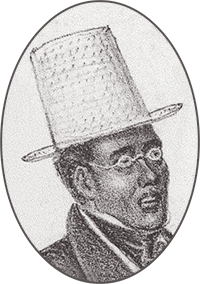Florence’s Historic African American Community
By 1850 the small village of Florence (then Bensonville), counted among its population a higher percentage of African-Americans than nearby Springfield or even other strongly abolitionist Massachusetts communities in New Bedford and Boston. Many members of this significant if short-lived historical community were self-emancipated former slaves. Others like Sojourner Truth and David Ruggles were among the nation’s leading black activists in the struggle to end slavery.
Getting at how Florence came to be such a refuge and center of black activism demands we look at several streams of reform that mingled in the local landscape. The names of prominent abolitionists connected with this community read like a who’s who of anti-slavery. Lydia Maria Child, David Lee Child, William Lloyd Garrison, Frederick Douglass, Wendell Phillips, Charles Burleigh, in addition to Truth and Ruggles, all spent time here and were all, at the time, associated with the radical Garrisonian wing of abolition. Recent scholarship has helped us understand the role of the Northampton Association of Education and Industry (NAEI), a radical “utopian” community that lasted from April, 1842 to November, 1846. Less well known is the involvement of conservative, “orthodox” abolitionists with connections to Northampton. Arthur and Lewis Tappan and Joshua Leavitt were prominent nationally and strongly influenced the local anti-slavery leader and Underground Railroad (UGRR) assistant, John Payson Williston.
HENRY ANTHONY: Florence’s First African American Resident
Before the African American enclave on Nonotuck Street, before David Ruggles joined the Northampton Association, Henry Anthony, a fugitive slave from Maryland, was the first known African American to live in Broughton’s Meadows, what would later be known as Florence.
DAVID RUGGLES: The Community Comes Together
David Ruggles’ story bridges the divide between these two camps of abolition and helps explain why they coexisted in proto-Florence. Click here to read more about Ruggles’ life in Florence.
SOJOURNER TRUTH: A Prophet’s Early Beginnings
Sojourner Truth joined the utopian community founded in Florence, the Northampton Association of Education and Industry, during the period immediately preceding her transformation into the Sojourner Truth we remember. Here, she was a laundress and active member of the community. It was in Florence that her autobiography was written and from here that she began her travels as a powerful orator.
Additional Reading (Click to open):
History of Nonotuck Street, 1835-1891: Early Multi-Culturalism in Florence, Massachusetts. by Steve Strimer.
Florence’s African American Heritage Trail Walking Tour Map.



